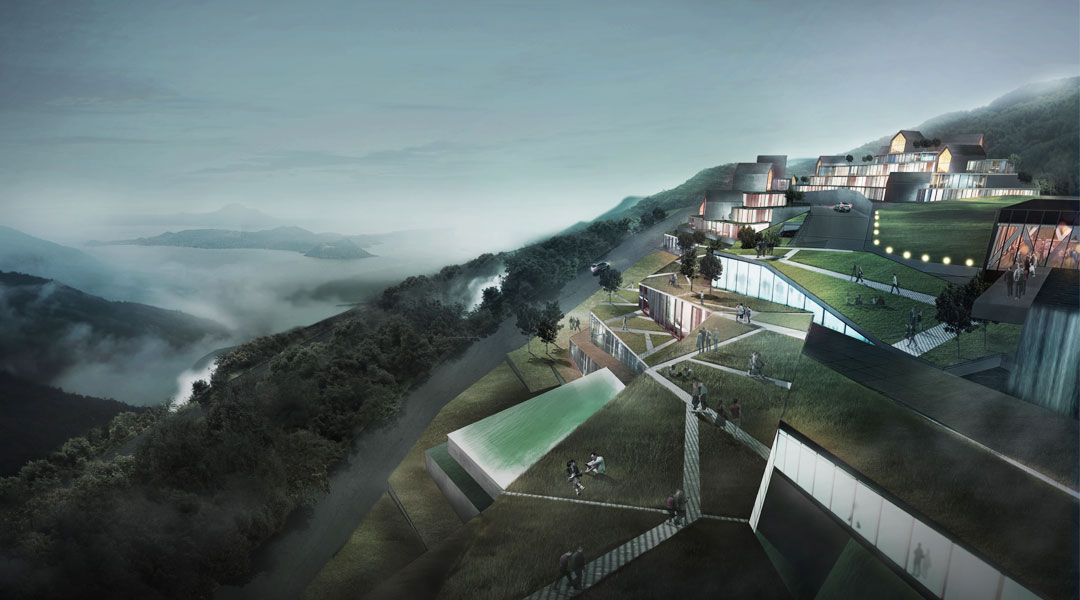
5 unbuilt hospitality and recreational spaces we wish existed
We may be crazy hopeful, but here are five visions of hospitality and recreational spaces in the Philippines that we wish we were realized sooner rather than later.
1 Bamboo Tells by Jayson Mata and Jelda Cabardo
Our plan was inspired by Maria Makiling folklore. We wanted guests to experience the feeling of getting lost, exploring, finding and being found. The idea is to make the guests feel they are exploring places they never had been. The lush bamboo forest promenade on the main interior curve road feels almost tunnel-like, suggesting mystery at first, followed by discovery upon reaching different arrival points within the development.

The Public Cluster Pavilions housing the hotel reception, lounge and restaurant are in the middle of the site. They form the resort’s hub where people arrive, depart and converge again. Curving decks and roads connect these structures to others in the resort, encouraging guests to wander around and experience the place.
Guests today look for unique experiences in their hotel stay. We are convinced that we offer a unique solution via form and function. The architecture and materials feel local and familiar, yet are world-class, interesting and fresh. Guests will find their own story in their own way during their stay at Bamboo Tells.
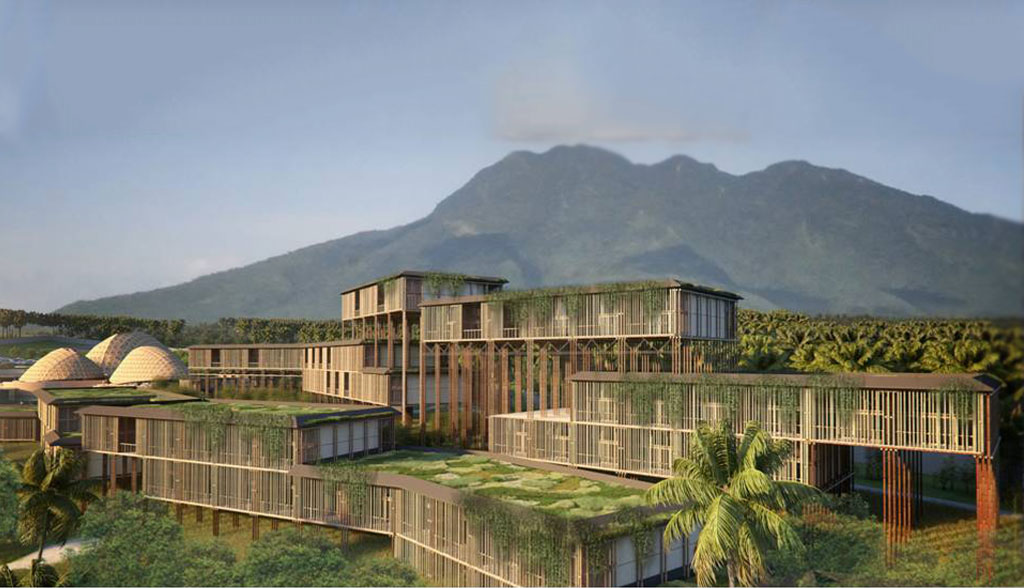
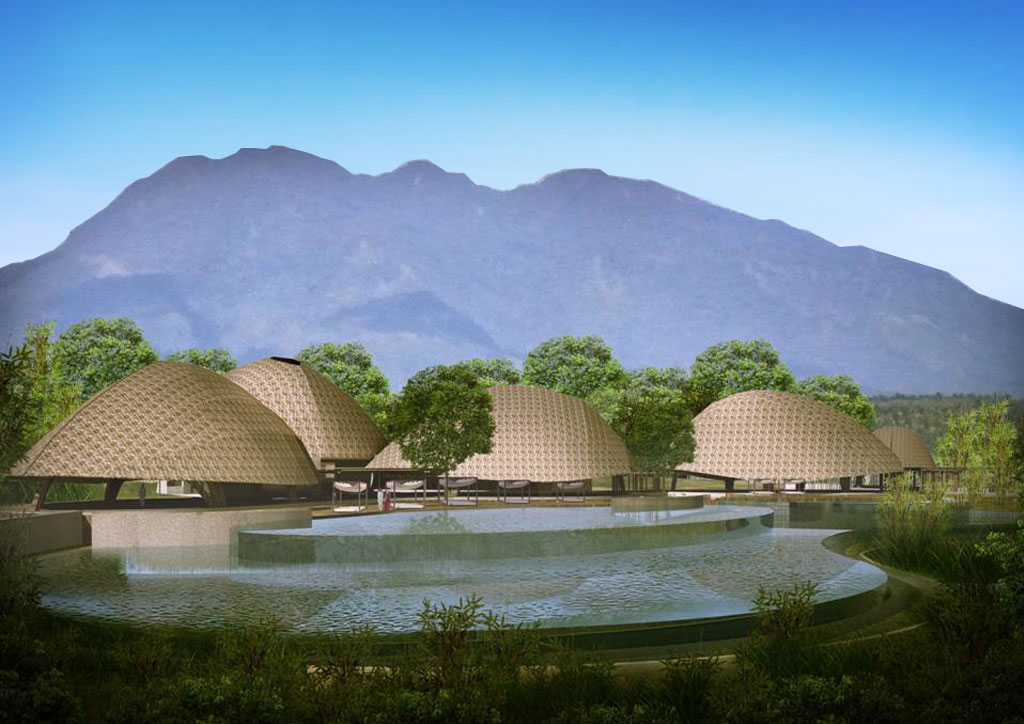
Bamboo Tells is an entry to the Metrobank Arts and Design Excellence (MADE) 2015 competition, architecture category, where it received a special citation.
2 Celebrity Hotel by Ed Ledesma
This project gave us the opportunity to create something unique to the place. We adhered to LVLP’s principle of designing contemporary tropical architecture, and utilized long, sharp eaves for the design of the hotel. Because of the site’s slope and topography, we used cut and fill to layout the guest rooms efficiently.
Viewed from above, the rooms look like terraces of concrete, water and grass. The structure’s raw concrete finish is framed and softened by landscaping, making the whole development appear as if it were made out of monolithic stone.
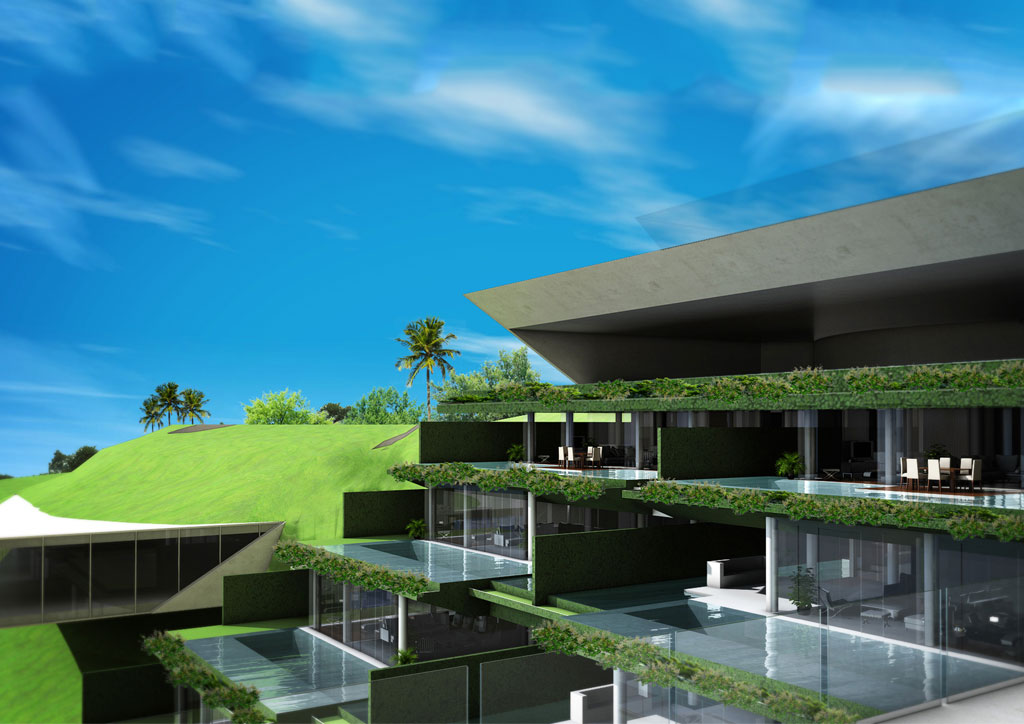

While the client was blown away by our schematic presentation, there were a lot of loose ends that prevented the project from rolling. The project required efficiency programs and feasibility studies, as well as technical consultants, project managers and construction supervisors who we were unable to get on board because of budgetary constraints. Several months after our presentation, there was no further instruction from the client so the project was eventually shelved.
READ MORE: Leandro V. Locsin Partners’ Ed Ledesma on Protégés
This project is a story of how man-made materials (concrete and glass) and natural elements (water, greenery) can bring out each other’s beauty when used together. In several instances during the design process, we treated architecture as the landscape, and vice versa. I believe good architecture is about striking a good balance between the two.
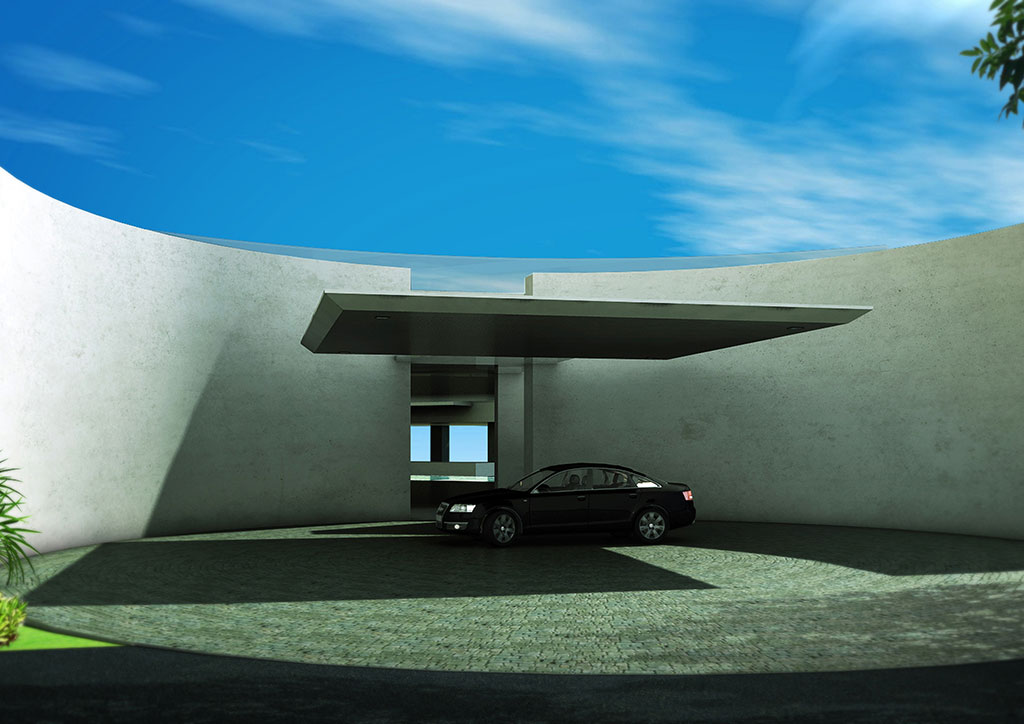

3 Cloudscape by WTA Architecture & Design
The owners presented WTA with a lot located on the less busy side of Tagaytay, and asked us to do a concept study for a hospitality project. The site was quite challenging given the sloping terrain, not to mention the stretch of zigzag road that cuts through the middle of the property.
Our concept was derived from the climate of Tagaytay, specifically the fog that cloaks the area from time to time. We believe that the people who regularly visit Tagaytay are after the chilly weather, not only the view of Taal Lake and the volcano. This gave us an interesting starting point for developing the character of the project.
READ MORE: William Ti Jr on WAF and the global design conversation
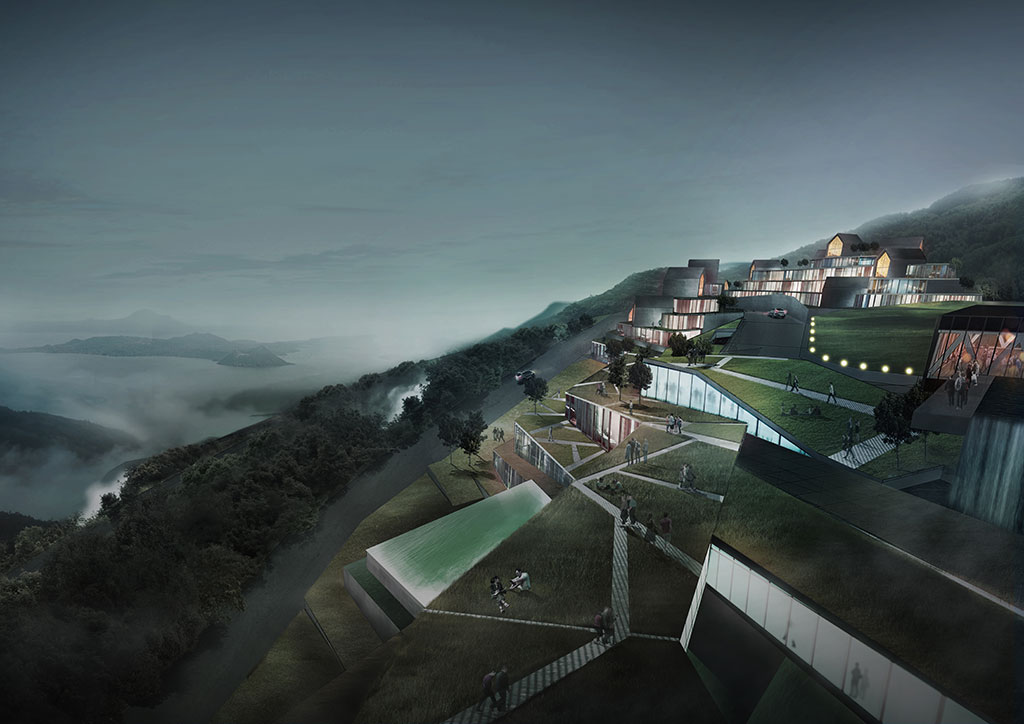

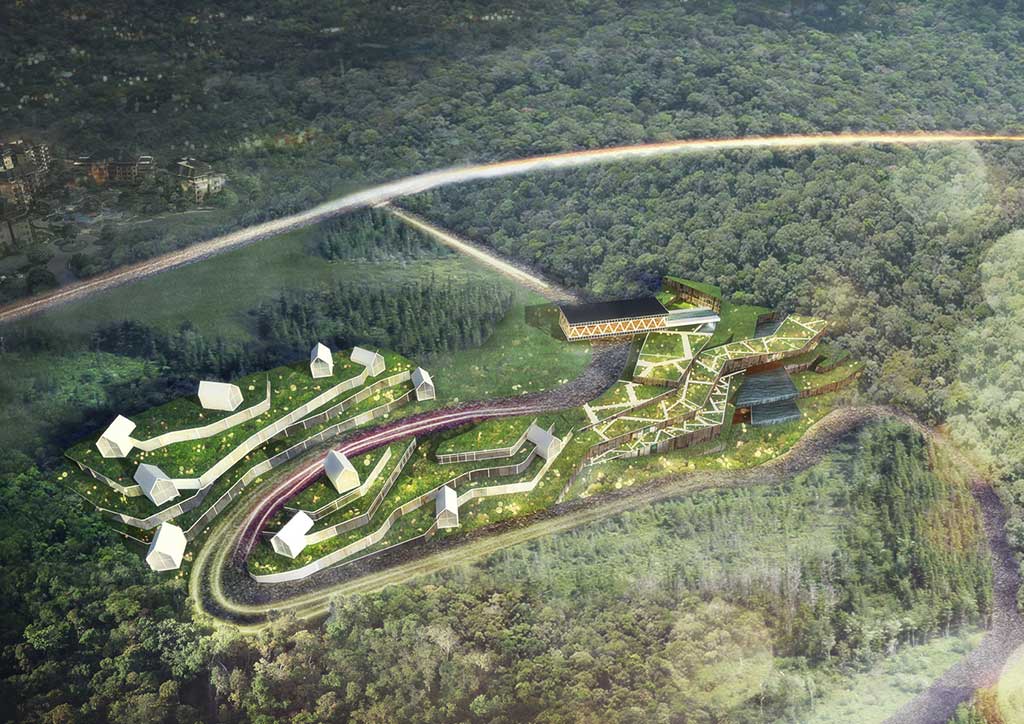
Taking inspiration from the experience of walking through Tagaytay fog, we came up with a design that begs to be explored and discovered. The structures are supposed to act as part of the landscape, blurring the boundaries between indoor and outdoor space.
The whole development will be sculpted out of the mountainside, and terraces containing the hotel rooms and residential units will be created. By integrating the structures with the topography, users will be unable to quickly grasp the development’s scale and complexity, prodding them to further explore and discover more of it.
4 Viewfinder Clubhouse by L.A. Poco Architects and Associates
The project is a clubhouse and amenity park for Avida’s Woodhill Settings landed development in Canlubang, Laguna. It’s a 500-square meter clubhouse with a social hall that can accommodate table service for 100-plus persons, a kitchen, event storage and spillover spaces, administration and security offices, and male/female restrooms and bathhouses.
It is sited in a 3-hectare park, set on the side of a hill overlooking a wooded natural bowl, thus the name, Woodhill Settings. The hillside has views of the Metro Manila skyline, which is why we took to naming the scheme, “Viewfinder.” The park was landscaped with Land Design One of Singapore, and amenities include a 5-lane lap-pool, kiddie pool, view deck, basketball court, storm shelters and walkways spanning the park’s landscape.
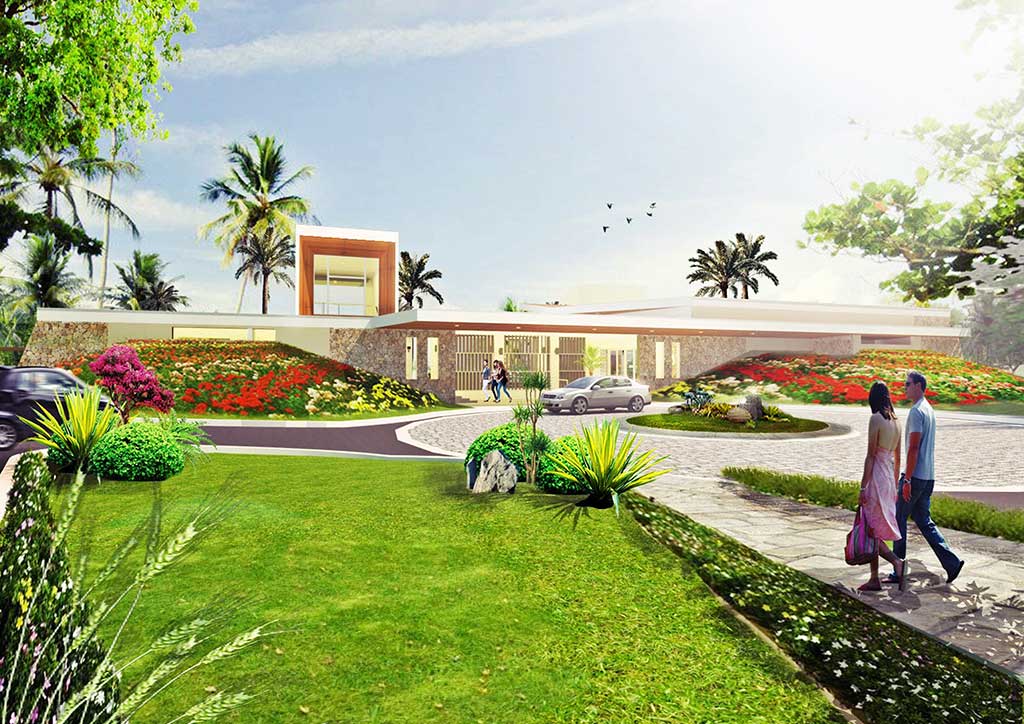

The design is driven by the site’s unique context. Architects will seldom get the chance to work on such a picturesque site and we wanted to use the clubhouse structure as a means of heightening the experience of seeing the views. The idea is to “constrict” views by creating walled berms that don’t directly show the view of the skyline and hillside.
READ MORE: Grading Green: The case for BERDE over LEED
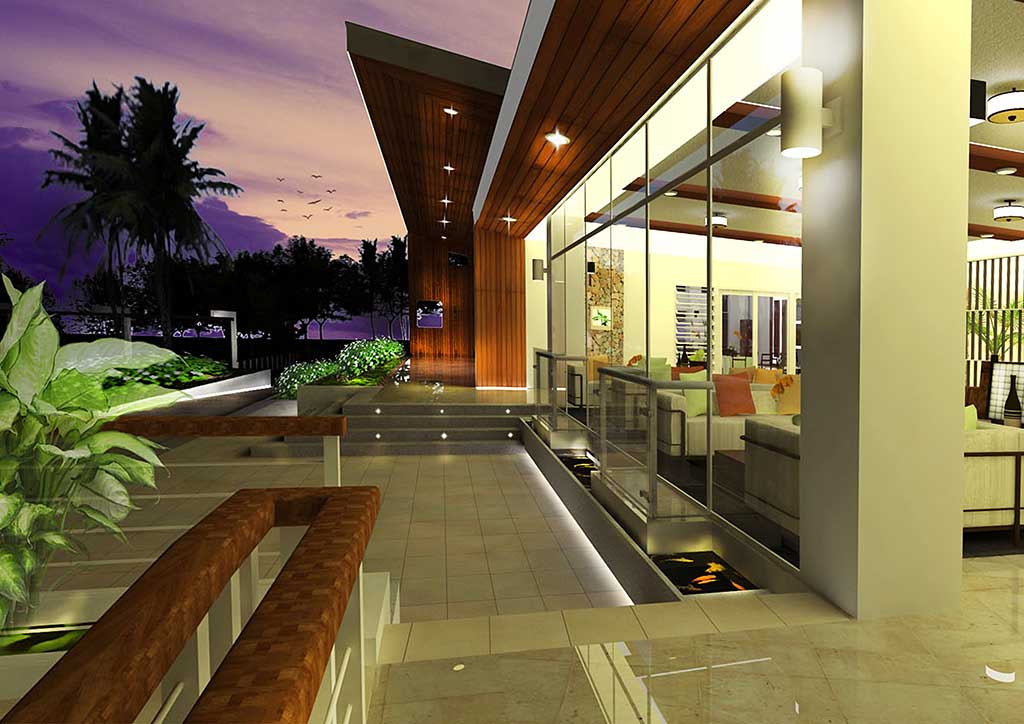
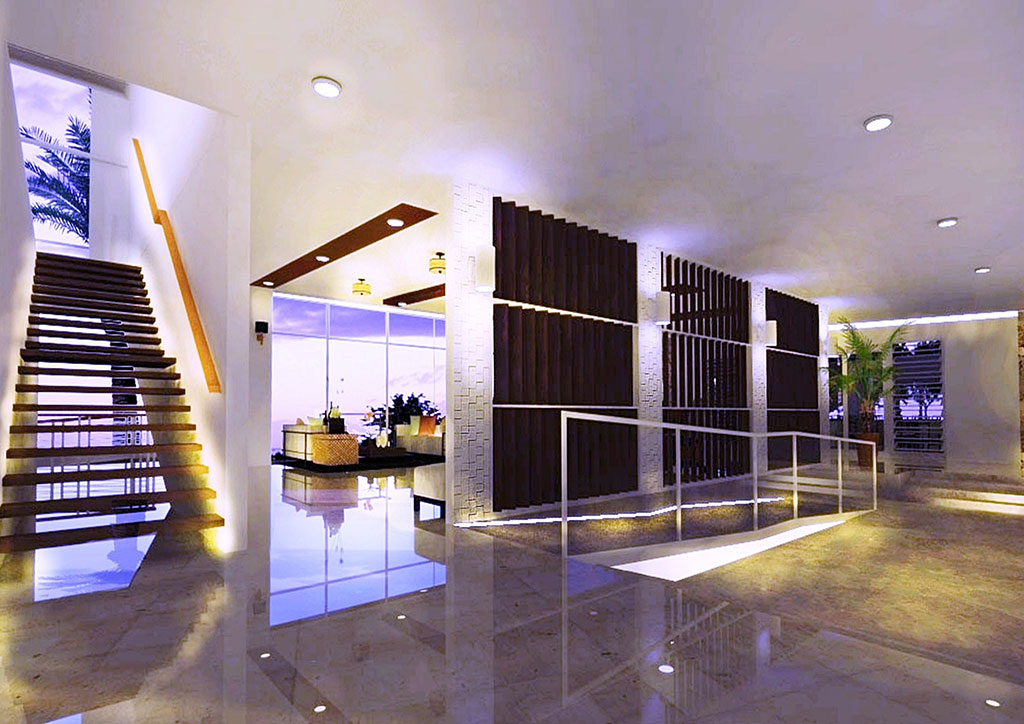
The walled berms are similar to walled hillside forts, which are usually located with great vistas for defensive purposes. We created a portal at the arrival area to frame the views to the metro skyline and to eventually lead people to the pool deck and amenities below. Berming or the use of sloping soil creates a diagonal plane on which you could lift the planting palette of a landscape. It’s like angling a dish of food so that it can be appreciated better.
5. South Laguna Prime by 1/0 design collective
A query about merging the geologic and the architectural into a cohesive entity resulted in a structure that blurs the boundaries between nature and man-made, with a volcano as the organic point of inspiration and a hotel structure as spouse.
The development consists of three volcanic crater-inspired themes reflecting the site’s geologic profile: the Maar Crater Lakes of San Pablo City, the lush tropical valleys of eroded calderas, and the cinder cones of Laguna’s volcanic fields, which dominate the rugged topography of the province.
READ MORE: The progressive and evolutionary minds behind 1/0 Design Collective
In the northern section of the resort, the lowest in topography, is a crater lake that serves as catchment basin. In the middle section is a large bermed caldera park, a communal area. In the south is a cinder cone crater enveloped by the hotel structure.
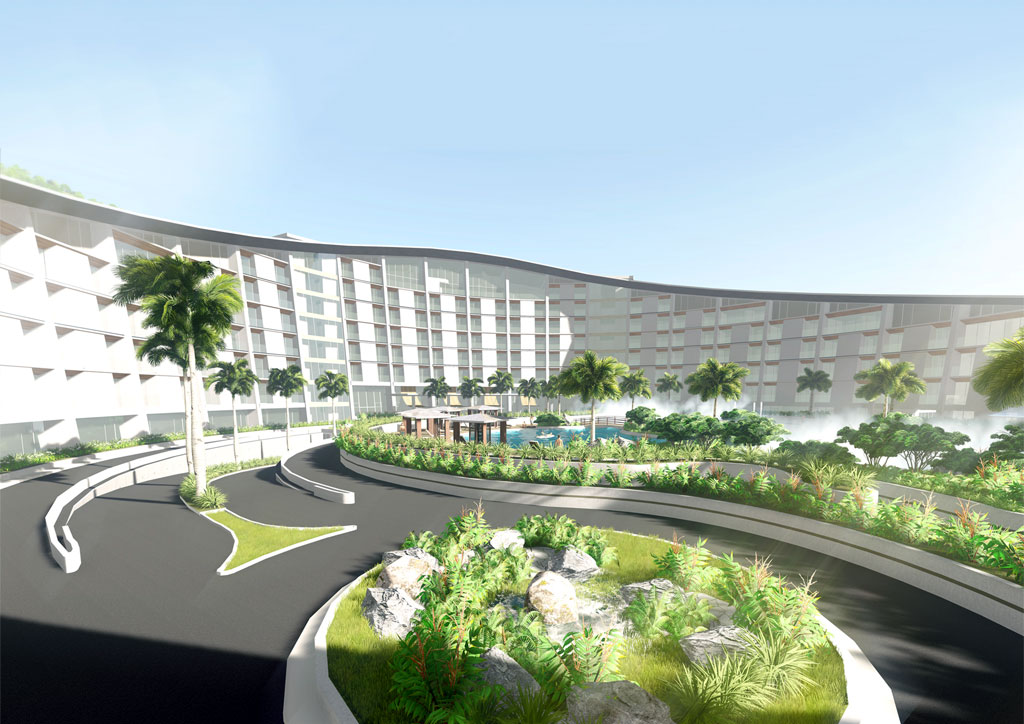


The hotel is an arc that cups the main water park. It is a single loaded plan with the units facing the park, and its corridor bound by a loaded retaining wall that cools the hotel structure. The hotel proper tapers on both ends, crests on the midsection, and is capped with a sweeping green roof that sinuously connects the hotel with the main resort complex and the cultural center, creating green pockets in areas where it bends.


